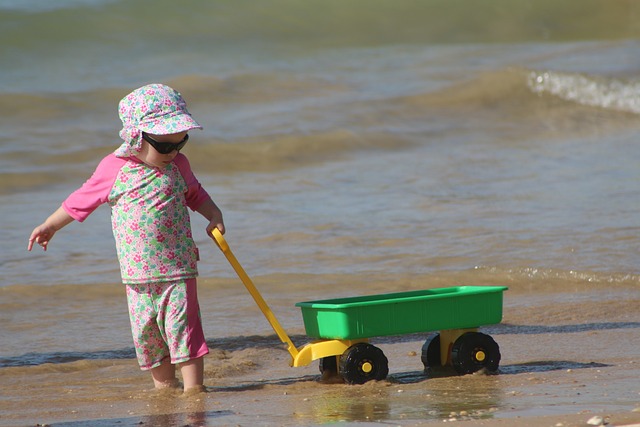Building resilient support systems is essential to safeguard at-risk children and empower them to thrive. Key strategies include educating children about online dangers, promoting healthy boundaries, and teaching them to speak up against harm. Robust measures involve implementing child protection laws, developing family safety plans, and providing comprehensive safety education. By integrating child safety tips into daily life, fostering open communication, and adhering to legal frameworks, we can create safe environments that prevent child abuse, injury, and foster overall well-being.
Building resilient support systems is paramount for at-risk children to thrive and overcome adversity. This article delves into the multifaceted strategies essential for their well-being, focusing on child safety tips, online safety, educational interventions, and robust family safety plans. By understanding the importance of these support structures, we can protect children from harm, prevent abuse, and foster safe environments, ensuring their security and fostering a brighter future.
Understanding the Importance of Support Systems for At-Risk Children
Building resilient support systems is paramount when it comes to safeguarding at-risk children and empowering them to thrive. In a world where child abuse, neglect, and online exploitation are pressing concerns, strong support networks can serve as a protective shield, offering much-needed guidance and protection. Child safety tips and education play a pivotal role in equipping young minds with the knowledge to recognize potential dangers, fostering online safety for kids, and empowering them to speak up against harm.
Safety extends beyond physical well-being; it encompasses emotional and psychological security as well. Implementing child protection laws and developing family safety plans are essential steps towards ensuring a nurturing environment. By teaching children about their rights, boundaries, and healthy relationships, we enable them to navigate challenges and make informed decisions. Protecting children from harm is not just about preventing physical injuries but also fostering resilience, encouraging open communication, and promoting environments that nurture growth and development in a safe, secure manner.
Child Safety Tips: Protecting Children from Harm and Abuse
Child Safety Tips are paramount in safeguarding our youngest members of society from potential harm and abuse. Implementing robust strategies to protect children involves a multifaceted approach that encompasses both physical and digital environments. Protecting Children from Harm requires fostering awareness about potential dangers and equipping them with tools to navigate unsafe situations. This includes educating kids on online safety, promoting healthy boundaries, and instilling in them the confidence to speak up against abusive behavior.
Child abuse prevention initiatives must also involve strengthening family safety plans and enforcing child protection laws. Creating safe spaces at home and within communities helps mitigate risks of injury and security breaches. Safety education for children should cover a range of topics, from recognizing suspicious activities to understanding personal boundaries. By prioritizing these child safety tips, we contribute to the development of resilient support systems that safeguard our children, ensuring their well-being and fostering secure environments where they can thrive.
Fostering Safe Environments: Online Safety and Educational Strategies
Creating safe and supportive environments is a cornerstone in safeguarding at-risk children. This involves implementing robust online safety measures to protect them from potential digital threats, such as cyberbullying or exposure to inappropriate content. Equally important are educational strategies that teach children about personal boundaries, privacy settings, and responsible internet usage, empowering them to make informed decisions.
Integrating child safety tips into everyday life is crucial for preventing harm. This includes establishing clear family safety plans, promoting open communication, and fostering a culture of respect and consent. By adhering to child protection laws and staying informed about local resources dedicated to child abuse prevention, parents, guardians, and caregivers can actively contribute to ensuring child security and well-being.
Implementing Family Safety Plans: Ensuring Child Security and Prevention Strategies
Implementing Family Safety Plans plays a pivotal role in ensuring child security and preventing potential harm. These plans should encompass various strategies tailored to each family’s unique needs, focusing on both online safety for kids and physical protection. Educating children about their rights and instilling safe behaviors is fundamental; they must understand the importance of reporting any suspected abuse or unsafe situations.
Safety education for children empowers them to recognize and avoid dangerous scenarios, including child abuse prevention measures. Moreover, reinforcing these plans through regular discussions and activities helps maintain a culture of safety within the family. Compliance with local child protection laws and staying informed about community resources dedicated to child injury prevention are also essential components of fostering a truly safe environment for at-risk children.
Building resilient support systems is paramount in safeguarding at-risk children. By implementing effective child safety tips, such as protecting against harm and abuse, fostering safe online environments, and integrating educational strategies, we can create a protective tapestry around these vulnerable individuals. Additionally, establishing comprehensive family safety plans ensures their security and acts as a prevention strategy against potential injuries or neglect. It’s through these collective efforts that we can foster a safer, more nurturing landscape for children to thrive.
